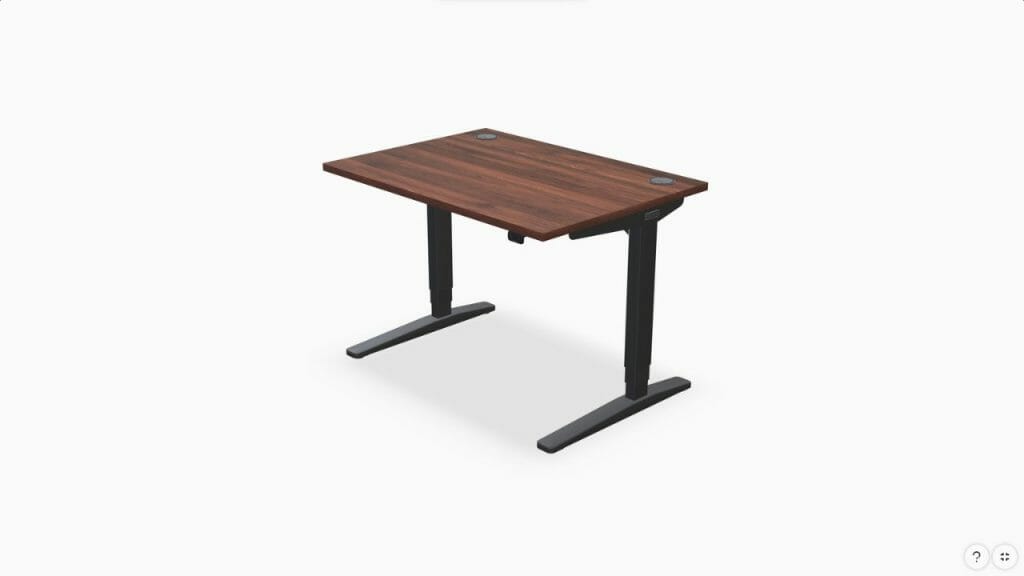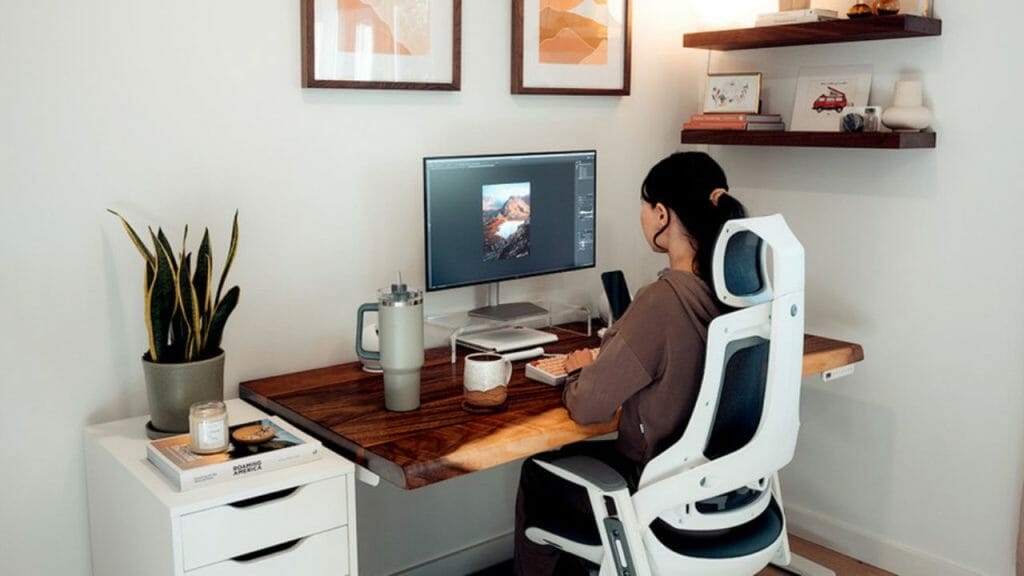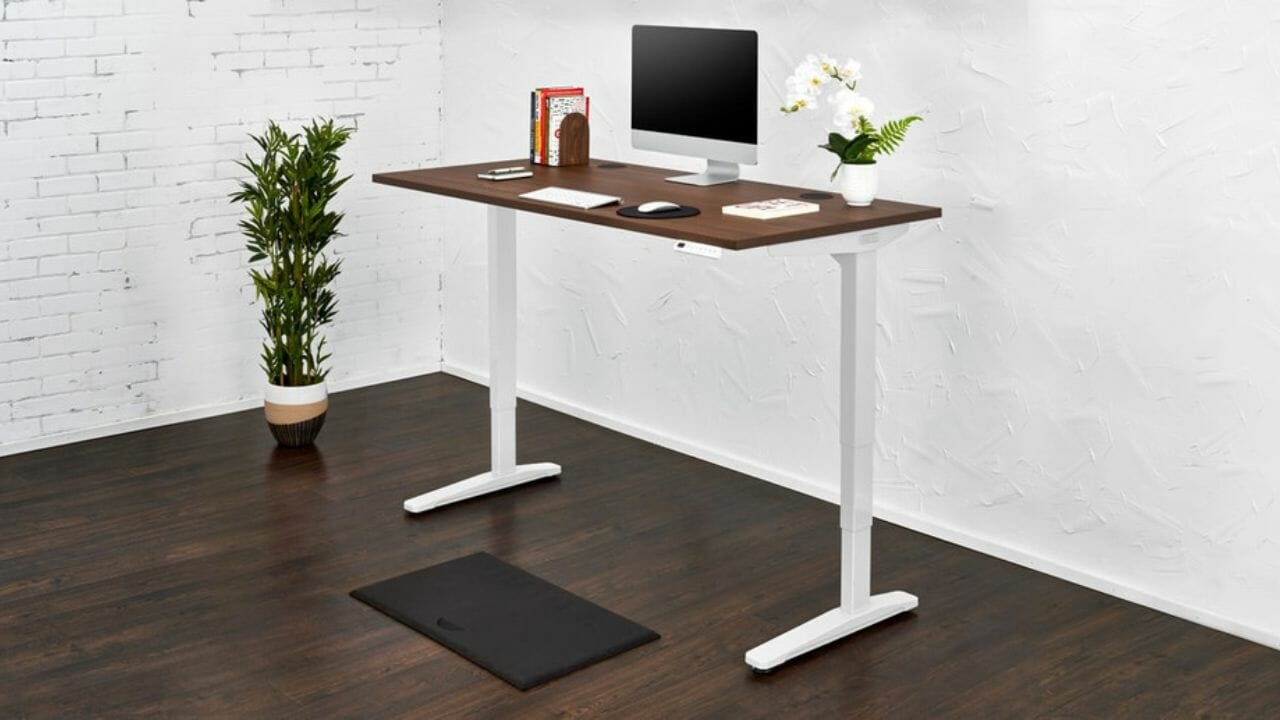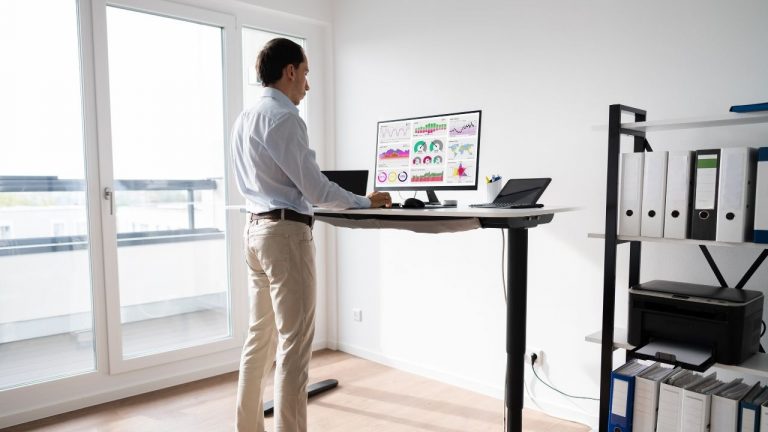Is Uplift Desk Wobbly?- Put It On Test!
What’s the point of having a standing desk that wobbles? It is extremely dangerous for your office items (like computers) that cost a lot. That’s why even though Uplift is a loved brand for office appliances, we have to ask, is Uplift desk wobbly?
Uplift desks usually start to wobble at the highest position, which is 50.9”. It doesn’t matter if your office essentials weigh below 355 lbs (weight capacity of Uplift desks). But Uplift is very stable if you stop at 42.5”.
Don’t worry. We are not asking you to make a judgment right now. Keep reading this article, and you will find the detailed result of a wobble test along with some major causes behind this issue. So, if you are ready, let’s get started.
What Does The Wobble Test Say?
What better way to identify a desk’s wobbliness than putting it to the test? Yes, there’s a wobble test that every standing desk goes through. It helps the user understand what to expect from a particular model. For you, we have described the entire test process below. Hopefully, it will clear out any doubts you have.
1. From 25” to 39”
At 25”, the desk is literally in the lowest position. For the first part of the test, let’s put 100 lbs of weight on the desk. The desktop’s weight (29 lbs) is included in the weight. Before pressing the arrow button, the desk appears solid and stable with no motion at all ( no matter how much you push it).
Now, let’s move it upward (to 39”). 39” is the average standing height for females. At this stage, the desk doesn’t show any sign of wobbliness. After pushing it from left to right, we don’t see it wobble much. But once the examiner pushed back and forth, you could see a little movement. But that’s negligible.
Again, we will do the same test. But this time, with 200 lbs on top of the desk. The outcome was similar when the desk was at its lowest level (no movement). But as the desk goes up to 39”, we can see slightly more movement than earlier. This time, the desk responded to the examiner’s lateral and front push. But overall, we are happy with the stability till 39”.
Result: No noticeable wobble.

2. From 40” To 45”
In the second stage, the examiner increases the height to 42.5”. We don’t see much shakiness with 100 lbs on top of the desk. Once he pushes it from the front, we see more movement than the earlier stage. But that’s not terrible. And the lateral push didn’t affect the desk much. Thanks to its wedge technology attached to the legs. It reduces the impact of such lateral pushes and keeps the desk more stable.
With 200 lbs weight on the desktop, we see it wobbling a little during the rocking tests (both lateral and frontal). But that seems manageable and won’t damage anything you keep on the surface.
Result: Tolerable.
3. Above 45”
Once the desk is set to reach its highest position, the desk starts to shake noticeably. We don’t even have to put 200 lbs on the surface to see it clearly. Even with the lower weight sets, the desk legs start hopping on the floor. That’s a bad sign. Because having the legs glued to the floor is crucial for stability. Things only get worse when the heavier weight sets were kept on top of the desk.
Result: extremely shaky.
Why Do Uplift Desks Become Wobbly?
How you perceive the test results is up to you. All we can do is inform you about the root causes of such inconsistency. Have a look, please.
1. Overload
It’s a no-brainer that your desk will fail/wobble if you overload it. But there’s a catch. We have noticed that Uplift V-2 desks start to underperform or show wobbliness even below their 355 lbs capacity. You might be able to relate to that.
Well, the answer lies within the supply network of Uplift. According to reports, JieChang (a China-based manufacturer) makes linear actuators and other frame-related stuff for Uplift. And, JieChang clearly states on its official website that the frames are able to carry 224 lbs of weight efficiently. After that point, you will feel the desk wobble.
That might explain why your Uplift desk is shaking even though the total weight is under 355 lbs. All we can do is, believe JieChang’s statement (as they are the original makers) and narrow down the weight limit to 224 lbs.
2. No- Cross Support
Cross support is the zig-zag pattern you see under some desks. It simply makes the column’s job easier. You can think of it as an extra helping hand that reduces the pressure on each leg during the transition. As a result, even if you are positioning the desk at 48” height, it will be more stable than an average desk.
But the problem with Uplift is that they don’t offer cross-support in the majority of their desks. Their argument is that cross-supports reduce the legroom. And, sometimes, that’s a major red flag if you are planning to keep a small cabinet under the desk. There’s no right or wrong. It’s just a matter of preferences. Some users do love the no cross-support feature in an Uplift desk.
3. Plastic Glides
Upon further inspection, we have found that Uplift uses plastic as the core material for their glides. That’s a red flag if you are looking for topmost stability. And here’s why.
Glides are designed to stay within the gaps of each column. Usually, glides act as protective pads that prevent the columns from getting damaged. Needless to say, glides play a strong role in maintaining the stability of a desk.
Same way, using cheap quality materials for glides will only backfire in the long fire. Just like the example here, plastic glides wear out pretty quickly. And so does their ability to protect the lifting columns. Hence, after a point, the columns can’t perform as smoothly as they used to. The instability and wobbliness is just a symptom of this major error in the frame.
4. Over Lubrication
This specific cause is related to the cheap glide one. You see, to make their glides more effective, the manufacturers tend to over lubricate them. You see, every glide works well when you lubricate them properly. it allows the columns to come out or go down smoothly without any disturbance. Usually, high-quality glides don’t need as much lubrication. Since Uplift chose to stick with plastic ones, they try to make up for it by lubricating the glides way beyond the recommended limit.
And here’s how it causes an interruption. The lubricator used on the glide’s surface slowly hardens up as they expire. The expired lubricants (now they are in a solid form) tend to build up on the glide’s surface. It reduces the glide’s smoothness and causes trouble for the columns during the transition.
Simply put, the lifting columns now have to face a rough glide which results in a temporary wobbliness. To be honest, it’s a very minor detail. We don’t think you would have noticed this issue at all. But if you have had the desk for quite some years, it might be a good time to check the glides.

What Can You Do To Make The Desk Less Wobbly?
First of all, try to use your warranty contract if the desk starts shaking rapidly. That’s a big No. And we won’t suggest you keep putting your expensive items on the desk anymore. Uplift usually offers 5 years warranty on their products. So, if you have got that, please use it.
However, that’s doable only after you have purchased the desk. If you are still in the process of buying an Uplift desk, we suggest you switch to their V-2 commercial frame. Even though both frames are manufactured in China, you still get better stability with the commercial frame. It’s what the users have claimed. We think having the cross-support system really enhances V-2 commercial frame’s ability to reduce shakiness at any position. So, if you are okay with spending a little extra, definitely check out the V-2 commercial frames for any Uplift desk.
Should I Still Buy An Uplift Desk?
Don’t be too overboard with the “wobbly desk” rumor. It’s true to some point for every electric desk available in the market. Yes, some high-quality America-based desks surely offer better stability. But the prices are that much higher.
On the other hand, if you can reduce your expectations a little, you get to have an amazing standing desk at an affordable price. As we have said, order the V-2 commercial frame, keep the load in check (below 200 lbs), and evenly distribute the weight. These small steps will help you enjoy a better experience with your Uplift desk.
Before You Go!
The only way to make the most out of your Uplift desk is to know the right ways to use it. We have come across users who wonder whether the standing desk can lift them up as well if they are below 355 lbs. Well, if you find yourself having the same doubts, please check our article, which will debunk any wrong perception you have about an Uplift desk.


![Does Standing Desk Burn Calories? [Or A Myth?]](https://homethereby.com/wp-content/uploads/2023/03/T-Leg-vs-C-Leg-Standing-Desks-768x432.jpg)
![Do Electric Standing Desks Break? [Honest Answer]](https://homethereby.com/wp-content/uploads/2022/07/Do-Electric-Standing-Desks-Break-768x432.jpg)

